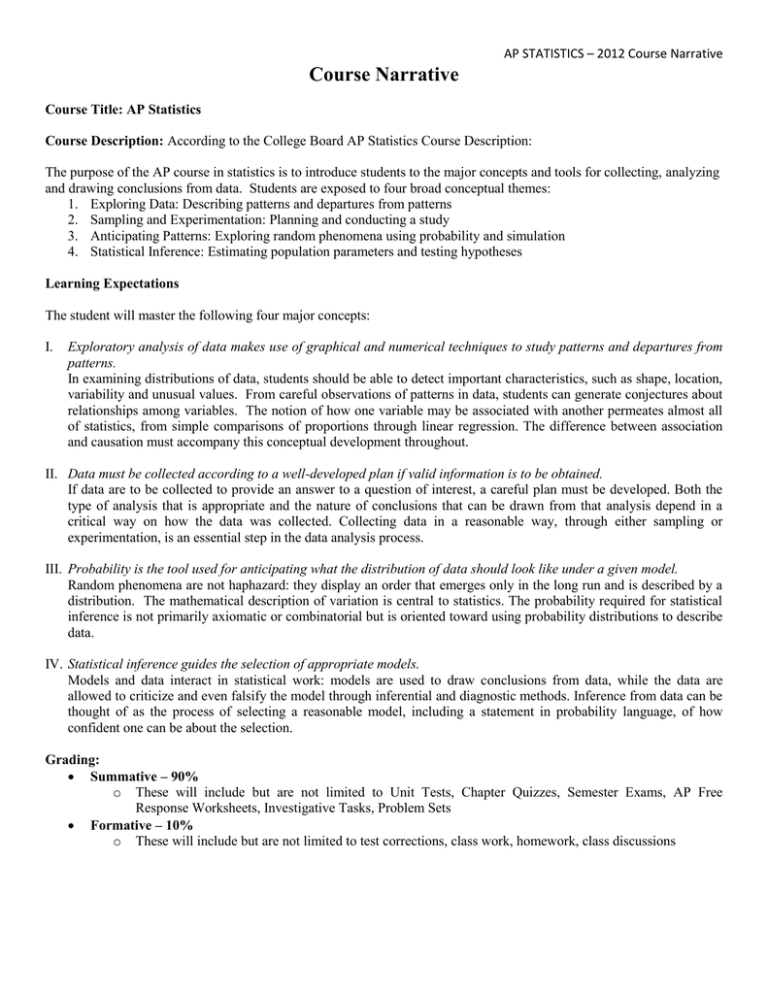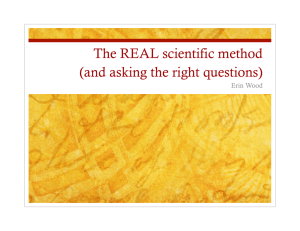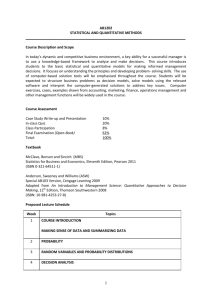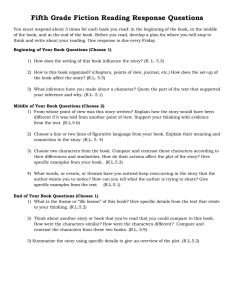Course Narrative
advertisement

AP STATISTICS – 2012 Course Narrative Course Narrative Course Title: AP Statistics Course Description: According to the College Board AP Statistics Course Description: The purpose of the AP course in statistics is to introduce students to the major concepts and tools for collecting, analyzing and drawing conclusions from data. Students are exposed to four broad conceptual themes: 1. Exploring Data: Describing patterns and departures from patterns 2. Sampling and Experimentation: Planning and conducting a study 3. Anticipating Patterns: Exploring random phenomena using probability and simulation 4. Statistical Inference: Estimating population parameters and testing hypotheses Learning Expectations The student will master the following four major concepts: I. Exploratory analysis of data makes use of graphical and numerical techniques to study patterns and departures from patterns. In examining distributions of data, students should be able to detect important characteristics, such as shape, location, variability and unusual values. From careful observations of patterns in data, students can generate conjectures about relationships among variables. The notion of how one variable may be associated with another permeates almost all of statistics, from simple comparisons of proportions through linear regression. The difference between association and causation must accompany this conceptual development throughout. II. Data must be collected according to a well-developed plan if valid information is to be obtained. If data are to be collected to provide an answer to a question of interest, a careful plan must be developed. Both the type of analysis that is appropriate and the nature of conclusions that can be drawn from that analysis depend in a critical way on how the data was collected. Collecting data in a reasonable way, through either sampling or experimentation, is an essential step in the data analysis process. III. Probability is the tool used for anticipating what the distribution of data should look like under a given model. Random phenomena are not haphazard: they display an order that emerges only in the long run and is described by a distribution. The mathematical description of variation is central to statistics. The probability required for statistical inference is not primarily axiomatic or combinatorial but is oriented toward using probability distributions to describe data. IV. Statistical inference guides the selection of appropriate models. Models and data interact in statistical work: models are used to draw conclusions from data, while the data are allowed to criticize and even falsify the model through inferential and diagnostic methods. Inference from data can be thought of as the process of selecting a reasonable model, including a statement in probability language, of how confident one can be about the selection. Grading: Summative – 90% o These will include but are not limited to Unit Tests, Chapter Quizzes, Semester Exams, AP Free Response Worksheets, Investigative Tasks, Problem Sets Formative – 10% o These will include but are not limited to test corrections, class work, homework, class discussions






